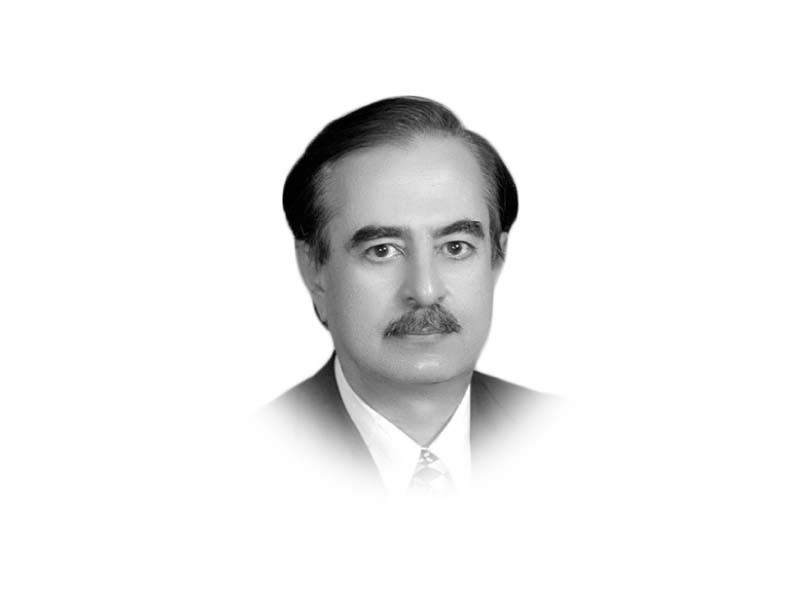
Consumer Price Index (CPI) inflation rate in USA stands around 9.1%. Although core inflation, i.e. inflation excluding prices of oil and food, is lower at around 4%, the expected high rate of headline inflation is likely to continue for some time due mainly to supply disruptions caused by oil and food prices increases on account of the Ukraine war. Growth rate during first quarter 2022 was only 1.6% compared to 5.6% during 2021. All economic pundits forecast a recession in the US economy, in tandem with worldwide economic slowdown. These trends will have repercussions the world over and in particular for developing economies in terms of growth, exports, employment and value of their currencies. Presently let us look at the dollar-rupee parity.
The elevated US inflation rate is bound to have worldwide impact, particularly in less developed economies like Pakistan which are strongly tied to or dependent upon the American economy for their exports and the US currency. To reduce inflation the US Federal Reserve has increased the interest rate to around 2% to cool off the economy. This increase is likely to continue until the inflation rate is brought down to at least 4%. In theory the Fed aims at keeping it down to 2% but in actual practice 4% is the accepted level, as was the case during the Reagan era 1980s when inflation had risen to levels of 11-12%.
Interest rate escalation in the USA leads to enhanced profitability of investments in American treasury bills and bonds which results in appreciation of the dollar value as compared to other currencies. In recent months the US dollar has appreciated against the euro by roughly 12% from one dollar to euros 0.98 to 1.20.
Since the Pakistan rupee is tied to the US dollar the value of our currency has accordingly depreciated, although there have also been other reasons why the rupee has fallen. The rupee has depreciated against the dollar in recent months by roughly 36%. Out of this the extent to which the rupee has fallen due to appreciation of the dollar is roughly12%.
The other reasons why the rupee has dropped are the high current account deficit mainly on account of high oil and food prices, especially due to supply disruptions, low exports, the depletion of our reserves on account of foreign exchange cash flow imbalance, the uncertainty about the restoration of the IMF assistance package and political instability. Even if these other reasons find improvement, the appreciation of the dollar due to increase in the interest rate in USA will still continue to affect the value of our currency. The rupee has of late rebounded to around Rs218 from as high as Rs239 to a dollar two weeks back due to sharp import constriction and improved chances of IMF package revival by end August.
The high rate of domestic inflation, mainly due to higher import prices, has also caused depreciation in the dollar parity of the rupee. Although enhancement of the interest rate by the State Bank can lead to increase in profitability of government treasury bills and bonds, the uncertainty element in the economy discourages external investments in bills, bonds or equity. Under normal circumstances this could’ve ameliorated the adverse pressures on the rupee, but given the dire external picture, exacerbated by high budgetary deficit, this redeeming aspect fails to bring the desired results. As compared to the free float of the dollar price mandated under the ongoing IMF agreement, letting the price to be determined by the market forces of demand and supply we have, over the years, more or less been pursuing a policy of a managed float, regulating the price of the US dollar to keep it in a certain bandwidth. This was done primarily to avoid and protect the economy and consumers from high inflation rates, and incentivise investments by keeping the interest rate low.
In case of the comparatively weaker or growing economies it is not unusual that such a financial policy is adopted. India has for long adopted such a course while China strictly maintains the Yaun rate within an acceptable range as compared to foreign currencies in order to retain the competitiveness of its exports in the international market, to keep growth rates high and firmly check domestic inflation. During the East Asian financial crisis of the 2000s, despite considerable external pressures, Malaysia’s Mahathir Mohammad refused to devalue the ringgit. The pursuit of such a policy may lead to depletion of foreign exchange reserves; where imports far outstrip exports, this can result in a current account crisis and reserve collapse. Developing countries have a hard time making difficult choices of balancing growth, low inflation and employment against the risk of a foreign exchange crisis. Deep economic structural reforms are thus commonly advocated to exit the repeated boom-bust cycle on a sustained basis.
The value of a country’s currency depends in the last analysis upon the strength of its economy as well the stability of its democratic system. In the economic sphere this encompasses the productive strength of the industrial, agricultural and service sectors, its revenues, exports, levels of employment, infrastructure, information technology, education, health and role of women in the society and economy. In the political sphere the vigour and maturity of the legal system, political parties, vigorous governance and a strong and free press play a vital role.
While these must remain as the permanent and sought-after aspects of our economic growth and human development, in the short term context the vacillations of the rate of inflation and interest rate in USA will continue to have domestic ramifications here. Only true economic viability and independence can cushion our currency from severe outside impact.
Published in The Express Tribune, August 23rd, 2022.
Like Opinion & Editorial on Facebook, follow @ETOpEd on Twitter to receive all updates on all our daily pieces.




1731916090-0/sabrina-(3)1731916090-0-165x106.webp)



1729685382-0/Untitled-design-(57)1729685382-0-270x192.webp)




COMMENTS (1)
Comments are moderated and generally will be posted if they are on-topic and not abusive.
For more information, please see our Comments FAQ